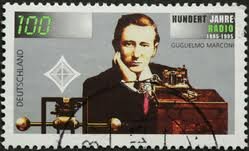Synopsis
Guglielmo Marconi

Synopsis
Born in Bologna, Italy, in 1874, Guglielmo Marconi was a Nobel Prizewinning physicist and inventor credited with the groundbreaking work necessary for all future radio technology. Through his experiments in wireless telegraphy, Marconi developed the first effective system of radio communication. In 1899, he founded the Marconi Telegraph Company. In 1901, he successfully sent wireless signals across the Atlantic Ocean, disproving the dominant belief of the Earths curvature affecting transmission. Marconi shared with Karl Braun the 1909 Nobel Prize in Physics. He died in Rome in 1937.
More ...
 Test your English Language
Test your English Language  Tips to succeed in Weight Loss
Tips to succeed in Weight Loss Sardar Vallabhbhai Patel
Sardar Vallabhbhai Patel Cartoon Characters
Cartoon Characters Worlds Most Beautiful National Parks
Worlds Most Beautiful National Parks Ratan Tata
Ratan Tata Isaac Newton
Isaac Newton Benefits of Grapes
Benefits of Grapes Lifestyle Gadgets
Lifestyle Gadgets Longest Bridges In The World
Longest Bridges In The World Longest Rail Tunnels In the World
Longest Rail Tunnels In the World




